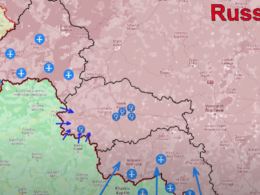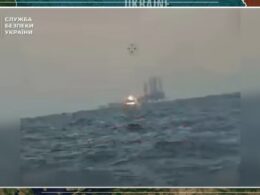Day 574: Sep 20
Today, there are a lot of new developments in the south.
Here, Ukrainians conducted the biggest and most comprehensive strike on the Russian bases in Crimea.
The target of the first strike, however, became the Krasnodar region. The goal of the attack was to divert the attention of the Russian forces from the area of the main strike.
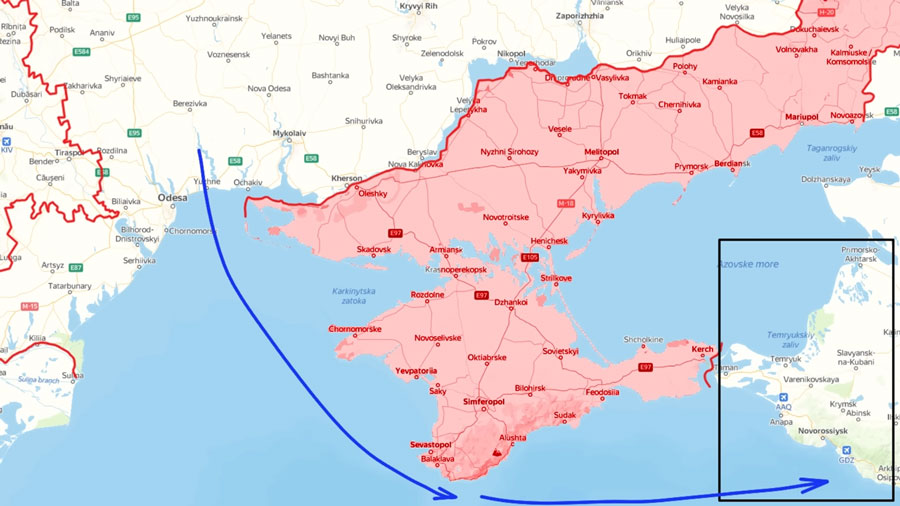
Russian sources reported that Ukrainians attacked an oil depot near Sochi with aerial kamikaze drones. One of the drones managed to hit one of the reservoirs on the site and cause a massive fire.
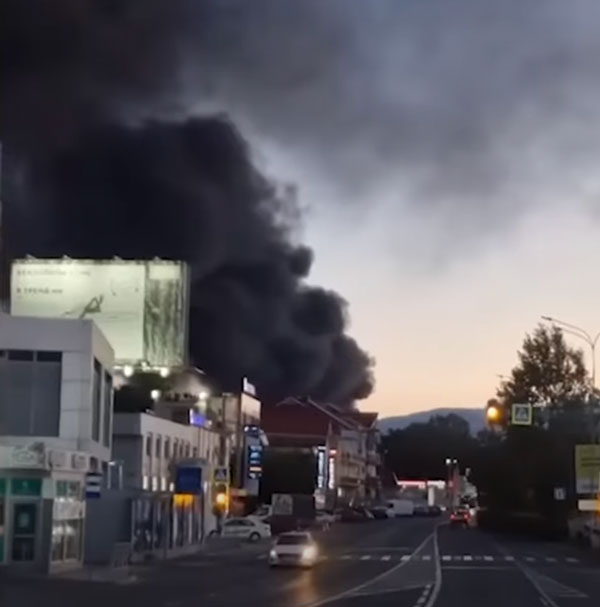
The area of the fire reached more than 100 square meters, and the firefighters could not put it out. As a result, 1200 tons of kerosene were destroyed, and the nearby reservoirs were possibly damaged.
https://twitter.com/EuromaidanPress/status/1704464925316239672
At first, Russian sources claimed that the fire was likely caused by an accident, as the locals did not hear any drones, and the air defense was silent, however, later, the footage from the site clearly featured the remnants of the kamikaze drone.

And the fact that no one even noticed the drones is precisely the reason why Ukrainians continue striking distant regions – because there are two possible outcomes, and both are beneficial to Ukraine – either Russians have no air defense in the region, and the strike is successful, or Russian air defense shoots it down, which means that they were likely forced to relocate it away from the front.
Several hours after the successful strike on the oil depot, Ukrainian drones started flying all over Crimea. Ukrainians focused their attacks on three different areas: northern, western, and southern.
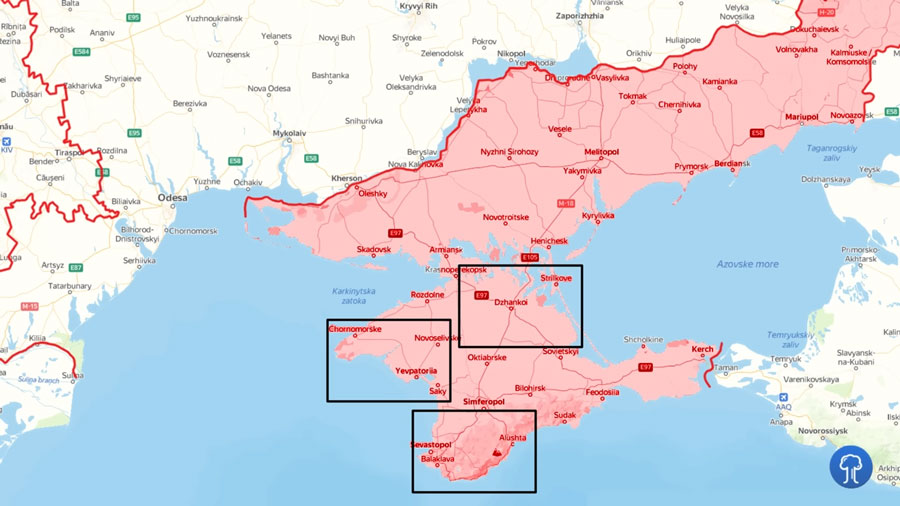
In the northern part of the region, explosions were heard near Dzhankoi. Dzhankoi is one of the main logistical hubs that connects Crimea and Russia with the Kherson and Zaporizhzhia regions. The targets of the strike were likely railroad facilities and warehouses on the outskirts of the town, where Russians usually had a lot of ammunition and equipment.
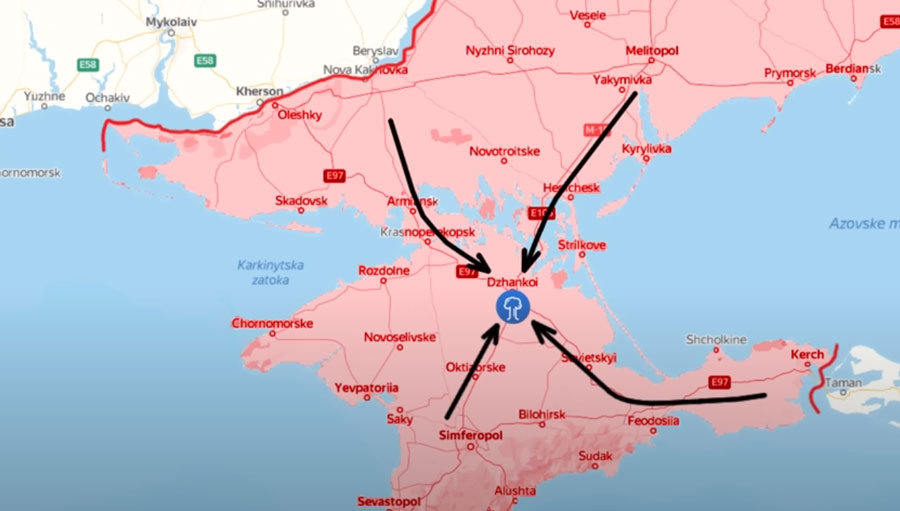
In the southern part of the region, Ukrainians concentrated their efforts on the military objects around Sevastopol. At first, a series of explosions were reported near the Belbek airfield.
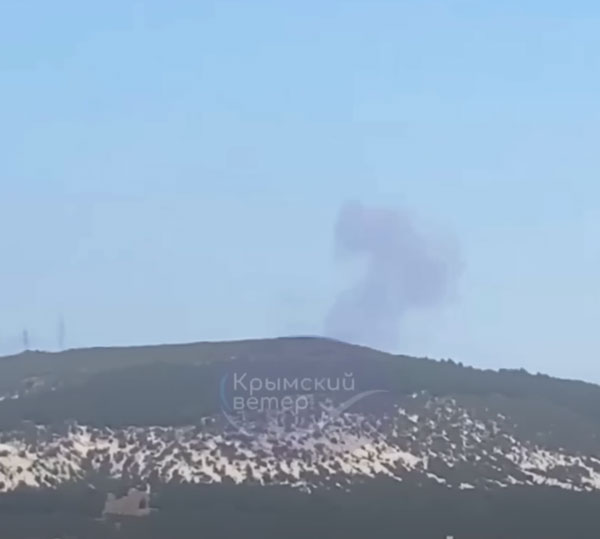
Another group of drones targeted the area between Sevastopol and Inkerman. Based on the geolocated footage, some of the drones managed to hit their targets.
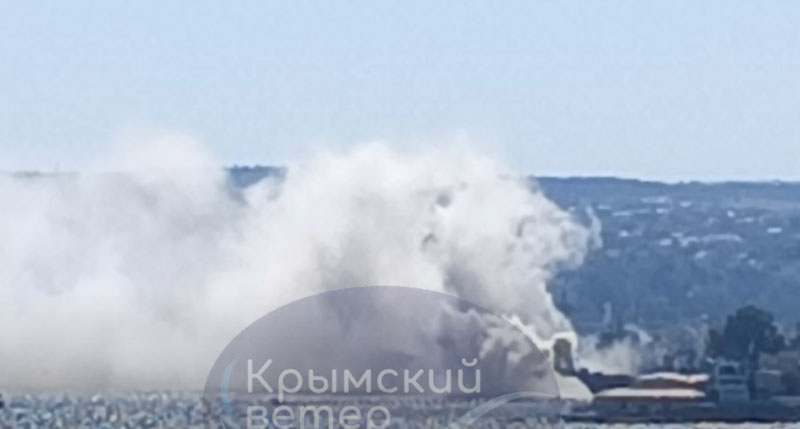
Next, local residents filmed how Strom Shadow missiles were flying right in the direction of Sevastopol. This time, however, the missiles passed it and struck a Russian base several km south of the city. Huge plumes of smoke rising to the sky indicated that Ukrainians hit the target, and later, the Ukrainian Intelligence as well as the General Staff, confirmed that Ukrainians successfully hit and destroyed the command center of the Russian Black Sea Fleet.
Ukraine attacks Russian Black Sea Fleet command post in Crimea
Interestingly, local occupation authorities claimed that the plumes of smoke were from the burning grass. Later, Russian sources reported that Ukrainians used 5 Su-24M to launch eight Storm Shadow cruise missiles and three decoy missiles AGM-160.
In the western part of the region, explosions were reported near Feodosia. The target of the strike became Russian aviation on the airfield in Novofedorivka, and as confirmed by the footage, some drones managed to hit their targets. However, the attacks still continue.
Russian analysts stated that this is the most intense and concentrated strike on Crimea and, especially, this particular region. They concluded that Ukrainians are trying to exhaust the Russian air defense before delivering a decisive blow with Storm Shadow missiles on the Russian fighter jets.

Russians already understood the threat of the new cruise missiles in the Ukrainian arsenal and started targeting Ukrainian airfields. Recently released footage by the Russian side shows how Russians used a kamikaze drone Lancet to attack Mig-29 on the airfield around 70 km from the front. This strike raised a lot of questions, especially why Ukrainians have their jets in the open so close to the front. The answer is simple: previously, Russians could not conduct such long-distance strikes discreetly. Usually, they used Shaheds and missiles, the launches of which Ukrainians could detect in advance and remove aviation from the airfields altogether. However, apparently, Russian forces improved their drones and are now capable of hitting much deeper, to which Ukrainians are already adjusting.
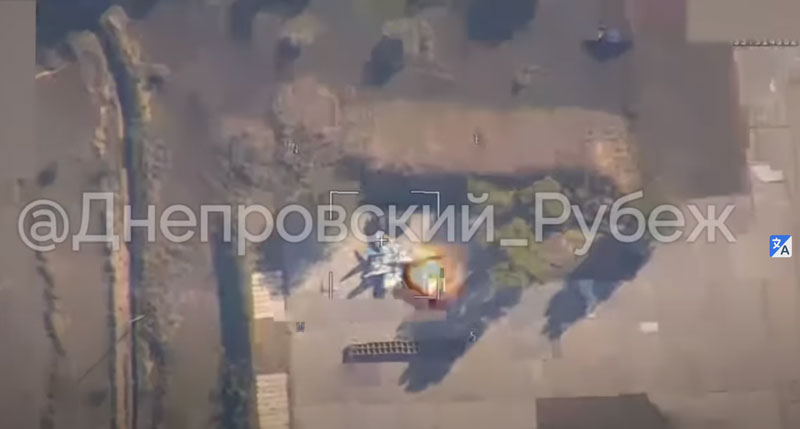
In the meantime, a sabotage group blew up two Russian jets and one helicopter on the Russian military base near Moscow. The attack caused a wave of panic as this airfield is used by the highest officials. In the aftermath of the explosions of the improvised explosive devices, Russians lost a helicopter Mi-8 that they used to shoot down Ukrainian drones, AN-148 and IL-20 jets. Russian federal services are taking measures to find the traces of the saboteurs, but so far, with no result.
Russo-Ukrainian war, day 574. Ukraine damages Russian military assets in Crimea and Moscow airbase
Today, Russians also lost a fighter jet Su-34, this time due to a malfunction or pilot error. The crash happened in the Voronezh region. The pilots reportedly timely ejected themselves from the aircraft, but the valuable piece of aviation will no longer be used to conduct strikes in Ukraine.
In our daily frontline report, we pair up with the military blogger Reporting from Ukraine to keep you informed about what is happening on the battlefield in the Russo-Ukrainian war.
Read also:
- Frontline report: Ukraine’s advance in Zaporizhzhia’s Verbove continues as its reserve placement creates dilemma for Russian defenses
- Frontline report: Ukraine’s latest attacks on occupied Crimea expose gaps in Russian defenses
- Frontline report: Russian surrendering soldiers killed by own artillery during Ukraine’s liberation of Andriivka near Bakhmut
- Weekly Frontline Update: Ukrainian counteroffensive is gaining momentum


